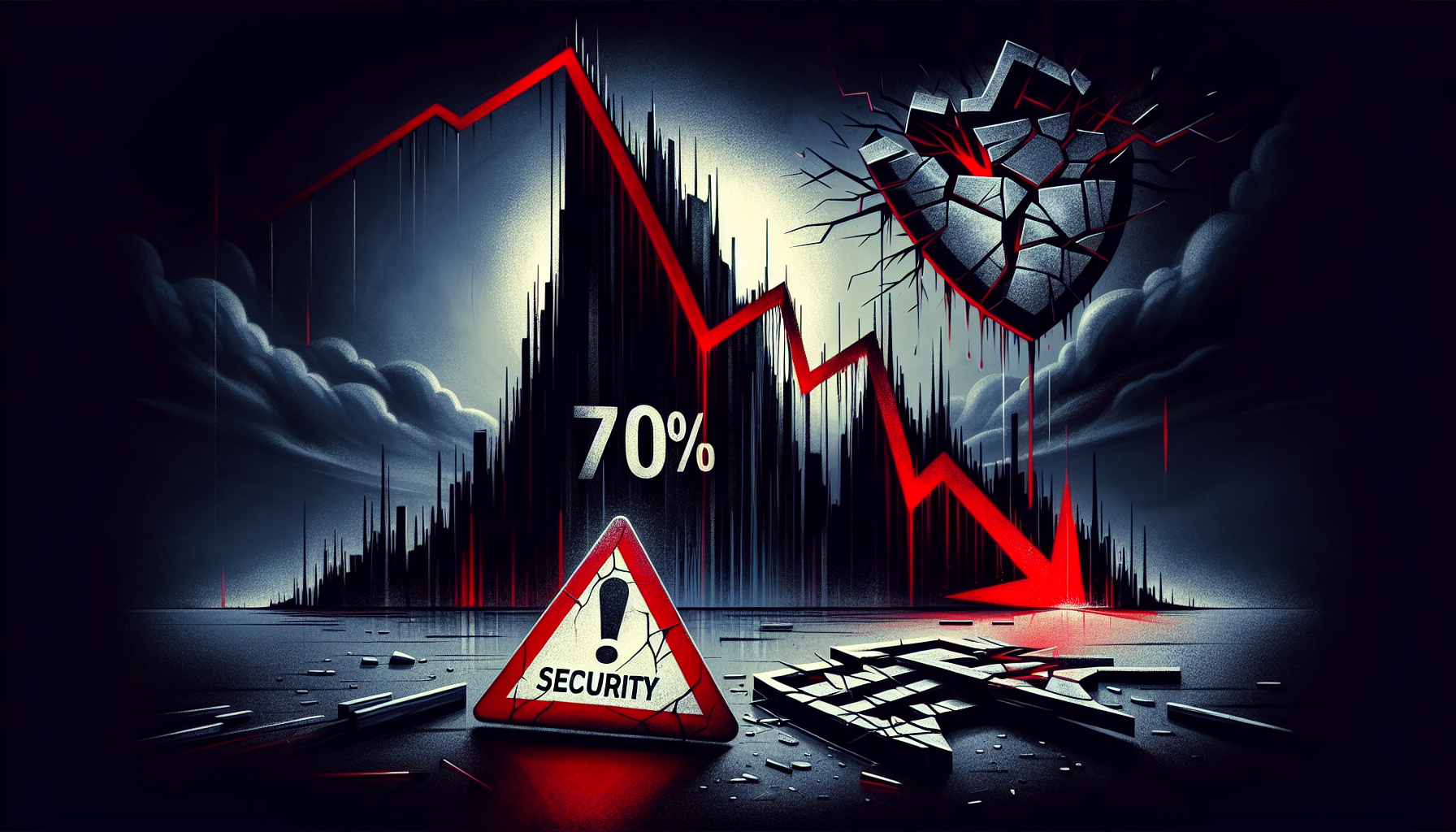
tl;dr
A major crypto project faces chaos after an $11M hack, triggering a 70% price drop and Upbit's rare 'trading warning' label. The incident raises urgent questions about security and transparency in the crypto space.
**Upbit’s Cautionary Move: UXLINK’s 70% Plunge Amid $11M Hack**
When a major cryptocurrency project faces a catastrophic security breach, the market reacts with a mix of panic and skepticism. For UXLINK, the token behind a web3 social media app, the fallout from an $11 million hack has been swift and severe. Despite being listed on South Korea’s largest exchange, Upbit, just hours after the attack, the token’s price has cratered by 70%, trading at $0.09404 as of this writing. The incident has sparked a broader conversation about transparency, security, and the risks inherent in the crypto ecosystem.
**The Attack and Its Aftermath**
The hack, which reportedly targeted UXLINK’s infrastructure, sent shockwaves through the community. While the exact details remain under investigation, the damage is clear: a significant portion of the token’s supply was siphoned off, with hackers minting 2 billion UXLINK tokens on Arbitrum. The social media platform, which positions itself as a decentralized alternative to traditional networks, has since pledged to track the stolen assets. Collaborating with blockchain analytics firm PeckShield, UXLINK claims “a large portion of the stolen assets has already been frozen.” However, the exchange has warned users against interacting with the token, citing the hacker’s access to the “mint role.”
**Upbit’s Safety Measures and Designation**
In response, Upbit, the dominant Korean exchange, took an unusual step: it designated UXLINK as a “trading warning” asset. The move, announced via an X (Twitter) post, flagged all trading pairs involving UXLINK (KRW, BTC, USDT) with a cautionary label. The Digital Asset eXchange Association (DAXA), which advocates for investor protection, endorsed the designation under South Korea’s Virtual Asset User Protection Act.
Upbit cited the lack of “material information disclosure” by UXLINK’s issuer as a key reason for the warning. “These issues indicate multiple deficiencies that could potentially cause user losses,” the exchange stated. Deposits for UXLINK have been suspended, with any funds returned to users. The designation, which began on September 23, could last until October 17, 2025, pending further review.
**A Token in Turmoil**
For investors, the situation raises critical questions. Why would a major exchange list a token under such severe scrutiny? Upbit’s decision underscores the delicate balance between innovation and risk in crypto. While UXLINK’s team claims no individual user wallets were targeted and vows to compensate affected accounts, the damage to trust is evident. The token’s collapse reflects broader market fears: when transparency falters, even the most promising projects can face ruin.
**The Bigger Picture**
The UXLINK saga is a stark reminder of the vulnerabilities in the crypto space. Despite advancements in security tools like PeckShield, hacks remain a persistent threat. For exchanges, the challenge lies in protecting users without stifling innovation. For investors, it’s a lesson in vigilance—never assuming a project’s safety, no matter its hype or partnerships.
As the investigation unfolds, one thing is clear: in the world of crypto, the line between opportunity and catastrophe is razor-thin. Will UXLINK recover, or will this be another cautionary tale in the industry’s ever-evolving story? Only time—and the actions of its developers, exchanges, and regulators—will tell.
*What’s your take on Upbit’s decision? Should exchanges be allowed to label tokens as “cautionary” assets? Let us know.*